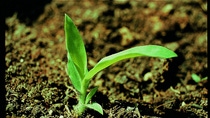Agriculture
Benefits for the crop
As a broad-spectrum herbicide highly effective against a variety of weeds, Glufosinate-ammonium has enabled the healthy production of more than 100 crops, including fruits and nuts, canola, soybean and cotton. This has fostered the availability of more high quality and affordable food as well as various products. Farmers also rely on GA when treating young trees as it is a contact herbicide and so can control weeds surrounding trees without harming the tree itself.
Additionally, crops such as canola, corn, cotton and soybeans with the LibertyLink trait are tolerant to Glufosinate-ammonium. Growers are therefore able to apply this herbicide in-crop for non-selective post-emergence weed control, right up to ten weeks prior to harvest, before these weeds jeopardize yield potential.
Did you know?
There are 8,000 species of weeds worldwide that not only compete with the crop for water, light, nutrients and space, but also reduce crop quality by contaminating the harvest.1
Global damage caused by weeds is responsible for a loss of 13.2% of agriculture production.2 It is estimated that weeds destroy the food of about 1 billion people.3
Please select crop from list
1Oerke, E.C., H.W. Dehne, F. Schnbeck, and A. Weber, Crop Production and Crop Protection: Estimated Losses in Major Food and Cash Crops, Amsterdam: Elsevier, 1994.
2PennState Extension. Introduction to Weeds: What are weeds and why do we care?
3Berca, M. Perspectives Regarding Weeds Control, University Foundation CERA for Agriculture and Rural Development, 2004.






